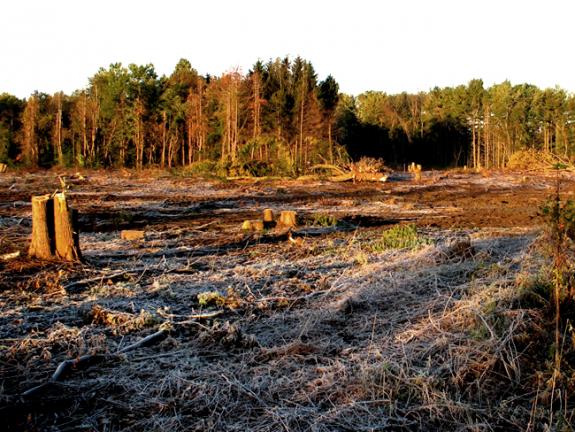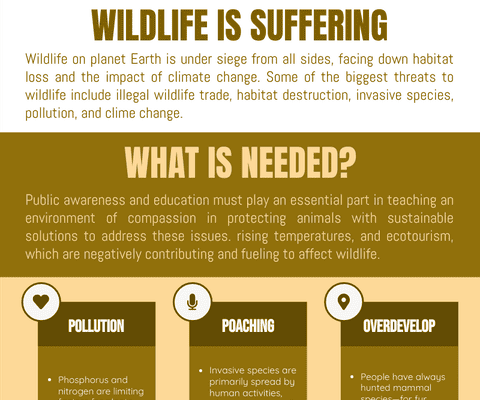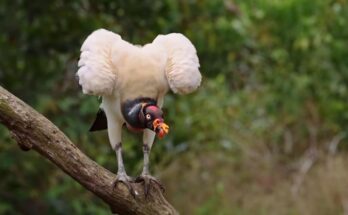Wildlife habitats face many dangers today. These threats are causing serious harm.
Wildlife habitats are essential for the survival of many species. They provide food, shelter, and breeding grounds. Sadly, these habitats are under constant threat. Human activities like deforestation, pollution, and urban expansion are major culprits. Climate change and invasive species add to the problem.
As these threats grow, many species struggle to survive. Understanding these dangers is key to protecting our natural world. Let’s explore the main threats to wildlife habitats and why they matter.
Habitat Destruction
Habitat destruction is a significant threat to wildlife. It occurs when natural habitats are altered or eliminated. This process can lead to the extinction of species. Let’s explore the causes of habitat destruction.
Deforestation
Deforestation is the clearing of forests. Trees are cut down for timber or to make way for agriculture. This practice is common in tropical areas. Forests are home to many species. When trees are removed, wildlife loses its habitat. The forest ecosystem becomes unbalanced. This makes it hard for animals to survive.
Urban Development
Urban development involves building new cities and expanding existing ones. This process requires land. Natural areas are often cleared for construction. As cities grow, they consume more land. This leaves less space for wildlife. Animals are forced to move to smaller areas. This makes it hard for them to find food and shelter.
Climate Change
Climate change poses a serious threat to wildlife habitats. Many animals face new challenges due to changing temperatures and weather patterns. These changes disrupt ecosystems and can lead to habitat loss. Let’s explore two major aspects of climate change: Global Warming and Extreme Weather Events.
Global Warming
Global warming leads to rising temperatures worldwide. Higher temperatures affect many species. Some animals can’t adapt quickly enough. Their habitats become unsuitable for survival. Plants and trees also suffer. They struggle to grow in warmer climates. This shift impacts the entire food chain. Many species may face extinction.
Extreme Weather Events
Extreme weather events are becoming more common. These include hurricanes, floods, and droughts. Such events destroy habitats rapidly. They leave animals without shelter or food. Floods can wash away nests and burrows. Droughts dry up water sources. Hurricanes flatten forests and wetlands. Wildlife struggles to recover after these disasters.
Pollution
Pollution is a major threat to wildlife habitats. It harms animals, plants, and the environment. Pollution comes in many forms, such as chemicals, plastic, and waste. These pollutants damage the delicate balance of nature. Below are some specific types of pollution and their impact on wildlife habitats.
Chemical Contaminants
Chemical contaminants are harmful substances that enter ecosystems. These can include pesticides, heavy metals, and industrial waste. When chemicals contaminate soil, water, or air, they can poison wildlife. Animals may ingest these toxins through their food and water, leading to illness or death.
Here are some common chemical contaminants and their effects:
- Pesticides: These can kill insects, which are food for many animals.
- Heavy Metals: Metals like mercury and lead can accumulate in animals’ bodies, causing long-term health issues.
- Industrial Waste: Factories can release chemicals that pollute water sources, harming fish and other aquatic life.
Plastic Waste
Plastic waste is another significant threat to wildlife habitats. Plastic does not decompose easily. It can last for hundreds of years. Animals can mistake plastic for food. This can lead to choking, digestive blockages, or starvation.
Plastic waste affects various species, including:
- Marine Life: Fish, turtles, and seabirds often ingest plastic, mistaking it for food.
- Land Animals: Animals on land can get entangled in plastic waste, leading to injury or death.
- Birds: Birds can use plastic to build nests, which can be harmful to their young.
Reducing plastic waste and cleaning up polluted areas can help protect wildlife habitats. Everyone can contribute by using less plastic and disposing of waste responsibly.

Invasive Species
Invasive species pose a significant threat to wildlife habitats. These species are not native to the area. They often outcompete local flora and fauna. This can lead to a decline in biodiversity. Invasive species can be plants, animals, or even pathogens. They disrupt the natural balance of ecosystems.
Non-native Plants
Non-native plants can spread rapidly. They often grow faster than local plants. This can choke out native species. Non-native plants can alter soil chemistry. They can change water availability. This affects the entire habitat. Animals that rely on native plants for food suffer. These plants can also introduce new diseases.
Predatory Animals
Predatory animals introduced to new habitats can cause chaos. They often have no natural predators in the new environment. This allows them to multiply quickly. They prey on native species. This can lead to the decline of local populations. Predatory animals can also compete with native predators. This disrupts the food chain. It can cause the collapse of entire ecosystems.
Overexploitation
Overexploitation is a major threat to wildlife habitats. It involves the excessive use of natural resources. This overuse leads to the decline of wildlife populations. Many species face extinction due to overexploitation. The main forms of overexploitation include hunting, poaching, and overfishing.
Hunting And Poaching
Hunting and poaching are critical threats to wildlife. Hunting is the legal pursuit of animals for food or sport. Poaching, on the other hand, is illegal hunting. Both practices can cause significant harm to animal populations. Poachers often target endangered species. This can lead to their extinction. Many animals are hunted for their fur, tusks, or horns. These activities disrupt ecosystems and harm biodiversity.
Overfishing
Overfishing depletes fish populations. It occurs when fish are caught faster than they can reproduce. This leads to a reduction in fish numbers. Many marine species are now endangered due to overfishing. Coral reefs and other marine habitats suffer as well. Overfishing also impacts the food chain. Larger predators struggle to find enough food, causing further imbalance in marine ecosystems.

Fragmentation
Fragmentation is a major threat to wildlife habitats. It divides large, continuous habitats into smaller, isolated sections. This process disrupts ecosystems and affects the survival of many species. Read on to explore the key causes of fragmentation.
Road Construction
Road construction is a leading cause of habitat fragmentation. New roads cut through forests, grasslands, and wetlands. These roads create physical barriers for wildlife. Animals find it hard to move freely and access resources. This isolation can lead to reduced genetic diversity.
Increased traffic also poses a risk. Animals crossing roads are often hit by vehicles. Road construction also brings noise and pollution. These factors further disrupt natural habitats.
Agricultural Expansion
Agricultural expansion also fragments habitats. As the demand for food grows, more land is converted to farmland. This conversion often involves clearing forests and draining wetlands. The result is a patchwork of small, isolated habitat fragments.
Wildlife in these fragments face many challenges. They have limited access to food, water, and shelter. Small populations are more vulnerable to diseases and predators. Agricultural activities also introduce pesticides and fertilizers, which can harm wildlife.
In summary, fragmentation due to road construction and agricultural expansion poses a serious threat to wildlife habitats. Addressing these issues is crucial for the conservation of biodiversity.
Disease
Diseases pose a significant threat to wildlife habitats. They can spread rapidly, causing severe declines in animal populations. Diseases disrupt the balance of ecosystems, leading to long-term consequences.
Pathogen Spread
Pathogens are microorganisms that cause disease. They can spread through direct contact, contaminated water, or food sources. Wildlife often lacks immunity to new pathogens. This makes them highly vulnerable.
Human activities accelerate the spread of pathogens. Trade, travel, and habitat destruction bring wildlife into closer contact with domestic animals. This increases the risk of disease transmission.
Habitat Degradation
Habitat degradation weakens wildlife health. Polluted environments stress animals, making them more susceptible to diseases. Deforestation and urban development reduce the space for animals to live and find food.
Fragmented habitats isolate animal populations. This limits their genetic diversity. Lower genetic diversity makes it harder for populations to resist diseases. Over time, weakened populations face a higher risk of extinction.

Conservation Efforts
Conserving wildlife habitats is vital for protecting our planet’s biodiversity. By focusing on conservation efforts, we can ensure that various species continue to thrive. This section explores key strategies to safeguard these precious environments.
Protected Areas
Establishing protected areas is one of the most effective conservation strategies. These areas serve as safe havens for wildlife, free from human disturbances. National parks, wildlife reserves, and marine sanctuaries are common examples.
Protected areas offer:
- Strict regulations to prevent poaching
- Controlled tourism to minimize impact
- Research opportunities to study species
Wildlife Corridors
Wildlife corridors are crucial for connecting isolated habitats. These corridors allow animals to move freely between different areas, ensuring genetic diversity and access to resources. They help mitigate the effects of habitat fragmentation.
Benefits of wildlife corridors include:
- Enhanced breeding opportunities
- Reduced human-wildlife conflicts
- Improved resilience to climate change
Conservationists work tirelessly to create and maintain these pathways. They use science and community support to ensure success.
Frequently Asked Questions
What Causes Wildlife Habitat Loss?
Habitat loss is primarily caused by deforestation, urbanization, and agricultural expansion. These activities reduce the natural spaces where wildlife lives and thrives.
How Does Pollution Affect Wildlife Habitats?
Pollution contaminates water, air, and soil, making habitats uninhabitable for wildlife. It disrupts ecosystems and harms the health of various species.
Why Is Climate Change A Threat To Wildlife?
Climate change alters weather patterns, affecting food availability and habitat conditions. Many species struggle to adapt to these rapid changes.
How Does Human Activity Impact Wildlife Habitats?
Human activities like construction, mining, and logging destroy natural habitats. This leads to fragmentation, reducing the living space for wildlife.
Conclusion
Protecting wildlife habitats is crucial for biodiversity. Threats like deforestation, pollution, and climate change harm these areas. Conservation efforts are essential to combat these issues. Everyone can help by supporting eco-friendly practices. Educate others about the importance of preserving natural habitats.
Small actions can make a big difference. Together, we can protect wildlife for future generations. By staying informed and proactive, we ensure a healthier planet. Let’s act now to safeguard our wildlife and their homes.



